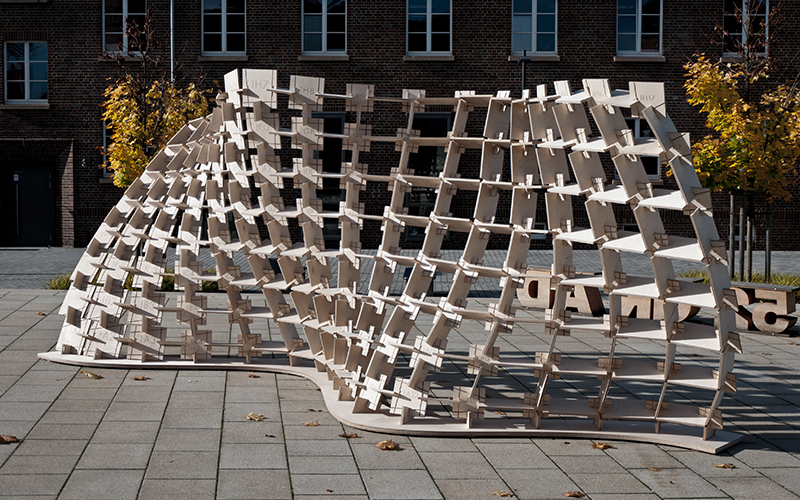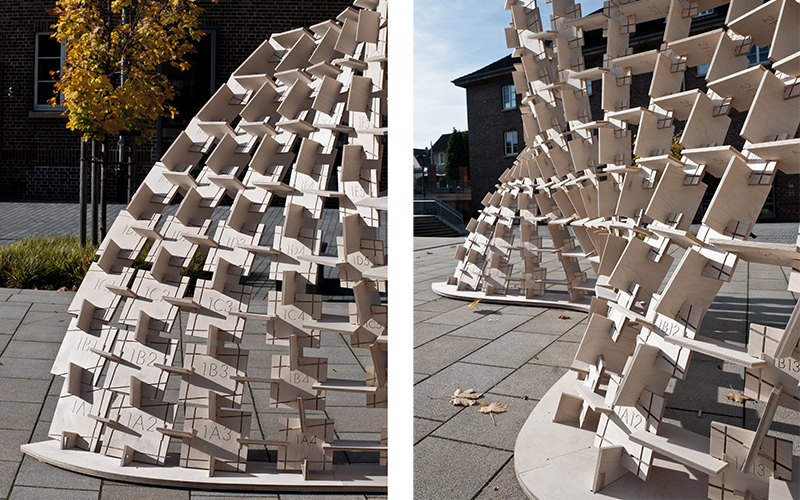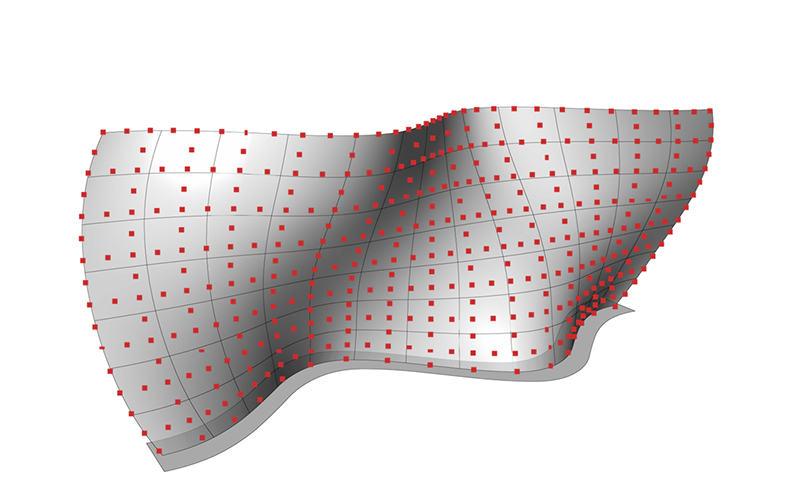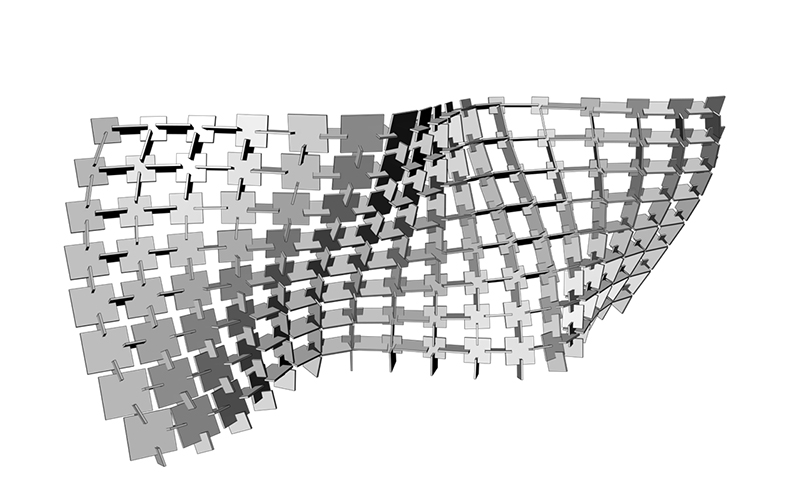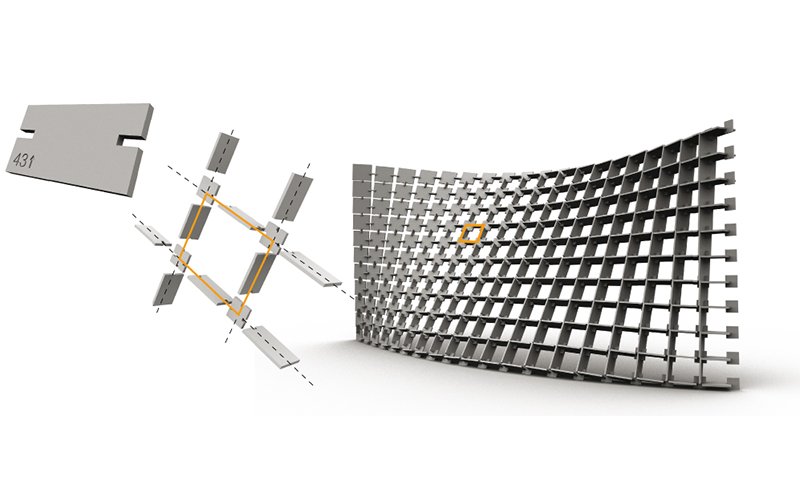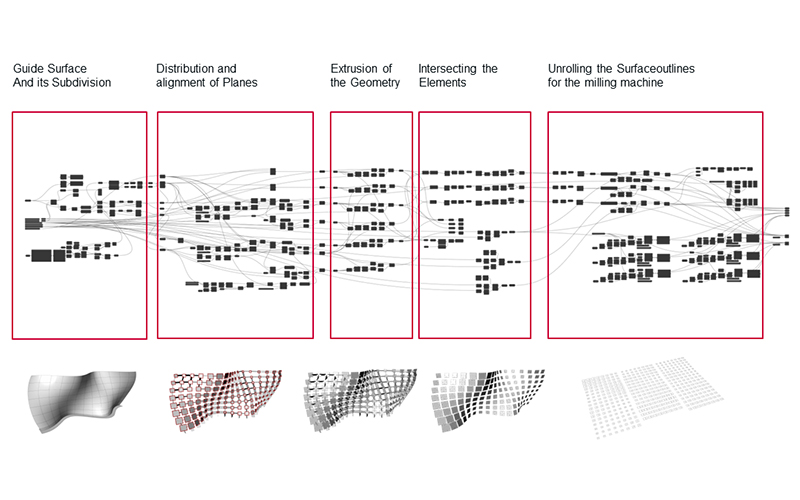- Digital Fabrication
- Informed Architecture
The SunSys project, lead developer Jens Böke, focused on an all-embracing design approach that implemented and connected all necessary information in a computational design process. Key aspects of the project were therefore the early integration of optimization parameters regarding structural performance, physical properties and material specifications as well as aspects of fabrication to inform the architectural design and construction. Particular source data for the design strategy was existing patterns and structures of movement onsite, usage timeframes and alignment in relation to the course of the sun and to changing patterns of shade. The form-finding process was developed generatively while the values for the structures’ graduated succession of open and enclosed sections were derived from the findings of the time-usage and the sun analysis.
In 2014 the system was developed further towards a design-build project in scale 1:1 as a proof of concept. The aim of the recent reconsideration of the draft was to transfer the digital model into a buildable construction: A wall, five meters long and two meters high, was implemented as an experimental construction on the Emilie campus in Detmold. It was developed through the application of digital design and manufacturing methods. Planar elements were assembled in a plug-in system and generated a freeform geometry. Variations in the dimension of the individual elements enabled different degrees of wall openings. As the production process and the chosen material required the calculation of tolerances, two extrusions had to be performed: the first, where the tolerance was not added, had the function to define the final geometry element, while the second, with an added tolerance, was meant to be merely the cutting element, which was erased after performing the cut to its neighbor.
CREDITS
Jens Böke, Prof. Marco Hemmerling, Prof. Ulrich Nether, Markus Opitz, Ingmar Rohlf.
Master Computational Design and Construction
East-Westphalia University of Applied Sciences
